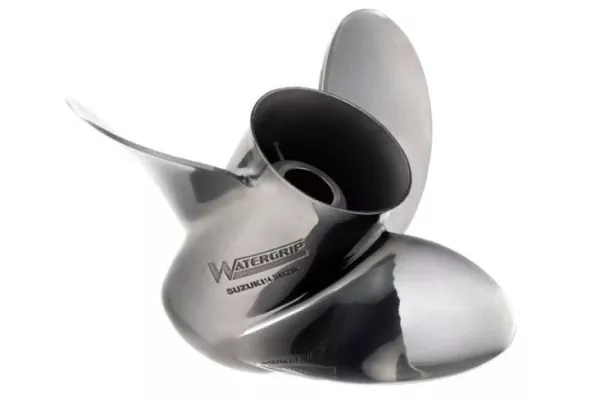Essential Characteristics of Ship Propellers
The selection of a ship’s propeller hinges on several key characteristics. While many might initially focus on diameter ve pitch, other less obvious traits play a vital role in enhancing performance across various applications and cruising conditions.
Right or Left: Direction of Rotation
The first crucial aspect to consider is the direction of rotation. For standard single-engine boats, the conventional direction is referred to as right-hand (RH). When positioned at the stern and looking forward, if the propeller turns clockwise, it propels the hull forward. An analogy is akin to using a screwdriver—turning it clockwise drives the screw in.
Conversely, a propeller that turns counter-clockwise is identified as left-hand (LH) and will reverse the direction of movement. In twin-engine boats, to counteract torque, propellers must spin in opposite directions. Here, an RH propeller typically pairs with the starboard engine, while an LH propeller aligns with the port engine.
Blade Count: More Isn’t Always Better
The number of blades is another critical factor that varies by vessel type. Smaller powerboats may have two blades, while larger vessels can utilize up to seven blades. For pleasure crafts, the most common configurations are between three and five blades:
- Two blades for top speed performance.
- Three blades, the most prevalent, achieve a balanced speed/thrust ratio.
- Four blades contribute to smoother operation and reduced noise.
- Five blades are focused on generating maximum thrust.
The choice between speed and thrust ultimately depends on specific usage scenarios.
Surface Area Considerations
When evaluating propellers, beyond the number of blades, the surface area of those blades becomes paramount. Known as the projected area veya fill factor, this characterizes the relative surface area of the blades against a disc of identical diameter. Thinner blades may offer higher efficiency but can also increase the risk of cavitation due to the smaller surface area distributing thrust.
Blade Shapes and Their Impact
Blade characteristics include:
- Rake: the tilt angle of the blade relative to its axis.
- Skew: the variation of the angle across different blade sections.
- Cup: a curvature at the trailing edge that enhances the blade’s effectiveness.
Each propeller’s design is tailored for specific applications, requiring a blend of expertise and meticulous craftsmanship.
Historical Insights and Additional Factors
Understanding ship propeller mechanics not only benefits operators but also enhances the overall experience on the water. At GetBoat, staying updated with news relating to sailing and seaside vacations reflects our deep commitment to promoting enjoyable and immersive ocean experiences. Freed from constraints, our service celebrates the energy and freedom inherent in selecting boats tailored to individual desires.
When planning to explore new coastlines, engaging in boat rentals provides the dual benefit of independence and adventure. Each gentle wave holds stories that parallel the local culture, splendid architecture, and even cuisine waiting to be discovered.
Conclusion: The Art of Propeller Knowledge
Understanding the various characteristics of ship propellers is essential for anyone in the boating community, especially those considering boat rentals. Emphasizing the need for informed choices aligns well with what GetBoat.com offers; a platform dedicated to ensuring that every nautical adventure is unforgettable, accessible, and tailored to your tastes. Whether you are looking to rent a boat for a romantic evening or a playful day at sea with friends, our comprehensive benefits include assessing options and providing transparent details on every mechanic needed to make your journey smooth.
Ultimately, each waterway presents unique experiences shaped by the rhythms of life, the magical hues of nature, and the flavors of local cuisine. Boating becomes more than a mode of transport; it allows travelers to embrace the diverse stories told by every inlet and lagoon. Consider GetBoat.com for your next seaside adventure, ensuring that your exploration of waterways is both seamless and enriching.
Key Points Recap
In summary, the intricate world of ship propellers encompasses far more than just size and shape; it’s a blend of dynamics that influence performance and experience. Whether it involves buying or renting a yacht, or simply indulging in some leisurely sailing, having a firm grasp of these principles can make a significant difference. A day spent on the ocean can offer a myriad of activities, from fishing to leisurely sunbathing on beautiful beaches. Explore your options without letting them slip through your fingers, as GetBoat ensures that the journey ahead promises excitement and discovery.

 Understanding the Nuances of Ship Propellers">
Understanding the Nuances of Ship Propellers">
